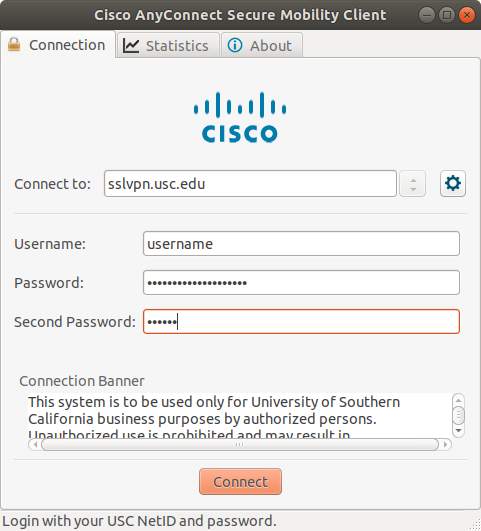I run Linux on my school computer, which I brought home to get work done during the stay-at-home order. But when I tried to set up a VPN connection, I was surprised to discover that USC IT didn’t seem to provide a Linux client for Cisco AnyConnect. When I contacted them to ask how to connect, I was informed that “at this time IT doesn’t support Linux.” Shrug emoji.
Fortunately I do support Linux, so if anyone else wants to connect to the USC AnyConnect VPN, here’s how. You could roll your own solution using OpenConnect and a vpnc-script, but that’s complicated. Instead, you can download a current Linux client for Cisco AnyConnect here (you’re welcome). Install it and run it.
You want to connect to sslvpn.usc.edu (the normal vpn.usc.edu server does not work here). To log in, enter your normal USC username and password. For “second password” open your Duo Security app, generate a two-factor code, and enter it here. And ta-da, you’re in.
